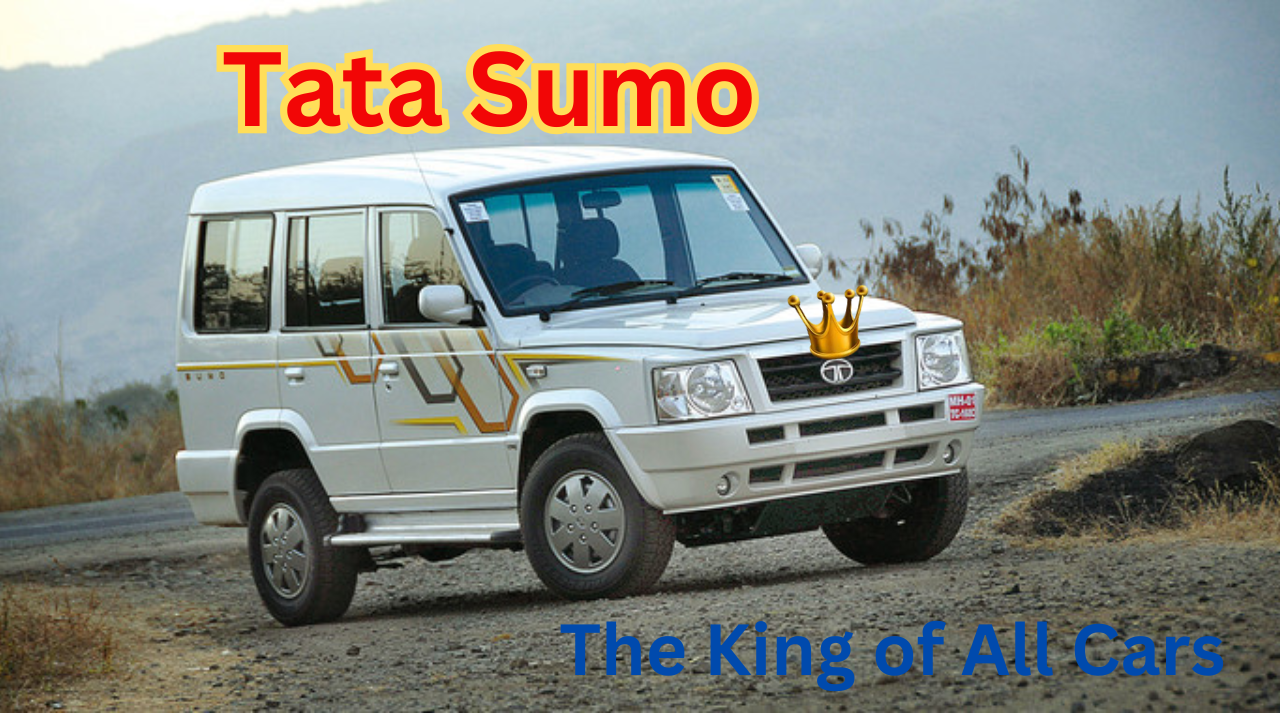Introduction
The Tata Sumo is one of the most iconic multi-utility vehicles (MUVs) in India. Launched in 1994 by Tata Motors, it quickly became a household name, known for its robust build, spacious interior, and powerful performance. But does it truly deserve the title of “King of All Cars”? In this article, we explore the legacy, performance, durability, and cultural significance of the Tata Sumo to understand why it continues to hold a special place in the hearts of many.
The Origins of the Tata Sumo
Tata Motors introduced the Sumo as a rugged and reliable utility vehicle primarily designed for both commercial and personal use. It was aimed at customers who needed a strong, dependable, and spacious vehicle capable of handling rough terrains and long-distance travel with ease.
Key Highlights of Its Launch:
- First introduced in 1994, targeting both urban and rural markets.
- Designed as an SUV-inspired MUV, making it highly versatile.
- Initially powered by a 2.0L diesel engine, known for its reliability and efficiency.
- Quickly became a preferred vehicle for government, military, and taxi services.
Performance and Durability
The Tata Sumo gained a reputation for being one of the toughest vehicles on Indian roads. Its powerful engine, high ground clearance, and robust suspension system made it an excellent choice for Indian terrains.
Performance Features:
- Engine Options: Over the years, the Sumo has been offered with 2.0L, 2.2L, and 3.0L diesel engines.
- Power Output: Depending on the variant, it produced 85-120 bhp, providing sufficient power for both city and highway driving.
- Torque & Load Capacity: Known for its high torque, making it ideal for carrying heavy loads.
- Fuel Efficiency: A decent mileage of 12-14 km/l, making it economical for long journeys.
- Tough Chassis: Built on a ladder frame chassis, ensuring durability and longevity.
Comfort and Space: A Family and Commercial Favorite
One of the biggest reasons for the Sumo’s popularity was its spacious interior and ability to carry up to 9 passengers comfortably. It was a go-to vehicle for large families, travel agencies, and even government fleets.
Comfort Features:
- Large Cabin Space: Plenty of legroom and headroom for all passengers.
- High Seating Position: Provides an excellent view of the road.
- Air Conditioning: Available in higher-end models, improving ride comfort.
- Strong Suspension System: Handles rough roads with ease.
Tata Sumo vs. Competitors
How does the Tata Sumo compare to other popular multi-utility vehicles?
| Feature | Tata Sumo | Mahindra Bolero | Toyota Innova |
|---|---|---|---|
| Engine Power | 85-120 bhp | 75-100 bhp | 100-150 bhp |
| Seating Capacity | Up to 9 | Up to 7 | Up to 8 |
| Fuel Efficiency | 12-14 km/l | 13-15 km/l | 10-12 km/l |
| Off-Road Ability | High | Very High | Moderate |
| Price (New) | Affordable | Moderate | Expensive |
From the table, it’s clear that while the Mahindra Bolero might have slightly better off-road capabilities, and the Toyota Innova offers better luxury features, the Tata Sumo strikes a balance between power, affordability, and practicality.
The Cultural Impact of Tata Sumo
The Tata Sumo was not just a vehicle; it became an integral part of Indian roads, culture, and daily life. It was widely used for multiple purposes, from government transportation to rural commute and even emergency services.
Why It Became a Cultural Icon:
- Preferred for Taxis: Sumo became the most common sight in Indian taxi services, especially for long-distance travel.
- Government and Defense Use: Used by the Indian police, military, and other government agencies due to its durability.
- Rural Favorite: Withstanding rough village roads and carrying heavy loads made it a go-to vehicle in rural India.
- Movies and Pop Culture: Featured in numerous Bollywood films as a rugged, no-nonsense vehicle.
Evolution and Discontinuation
Despite its dominance, Tata Motors discontinued the Sumo in 2019 due to stricter emission norms and changing market demands.
Reasons for Discontinuation:
- Introduction of BS6 emission norms requiring heavy modifications.
- Rising competition from newer, more advanced SUVs and MUVs.
- Demand shift towards more fuel-efficient and technologically advanced vehicles.
However, even after discontinuation, the Sumo remains in high demand in the used car market, with enthusiasts and commercial users still preferring it for its ruggedness.
Could Tata Sumo Make a Comeback?
There have been speculations about Tata Motors reviving the Sumo with a modern design, better safety features, and a BS6-compliant engine. If reintroduced, it could potentially compete with Mahindra Scorpio, Maruti Ertiga, and Toyota Innova.
Possible Features in a New Tata Sumo:
- Updated Engine: A cleaner, more powerful diesel or hybrid option.
- Modern Interiors: Touchscreen infotainment system, better seating comfort.
- Enhanced Safety: Airbags, ABS, and ESP for improved protection.
- Stylish Design: Keeping the rugged DNA intact but with modern aesthetics.
Conclusion: Is Tata Sumo the King of All Cars?
While the Tata Sumo may not be the most luxurious or the fastest vehicle, it is undoubtedly one of the most reliable, durable, and practical cars ever built in India. Its impact on Indian roads, contribution to the economy, and cultural legacy make it a true king in its category. Even today, many still regard the Tata Sumo as one of the most legendary vehicles ever produced.
Whether Tata Motors decides to bring it back or not, the Tata Sumo’s legacy as the “King of Utility Vehicles” will always live on.













